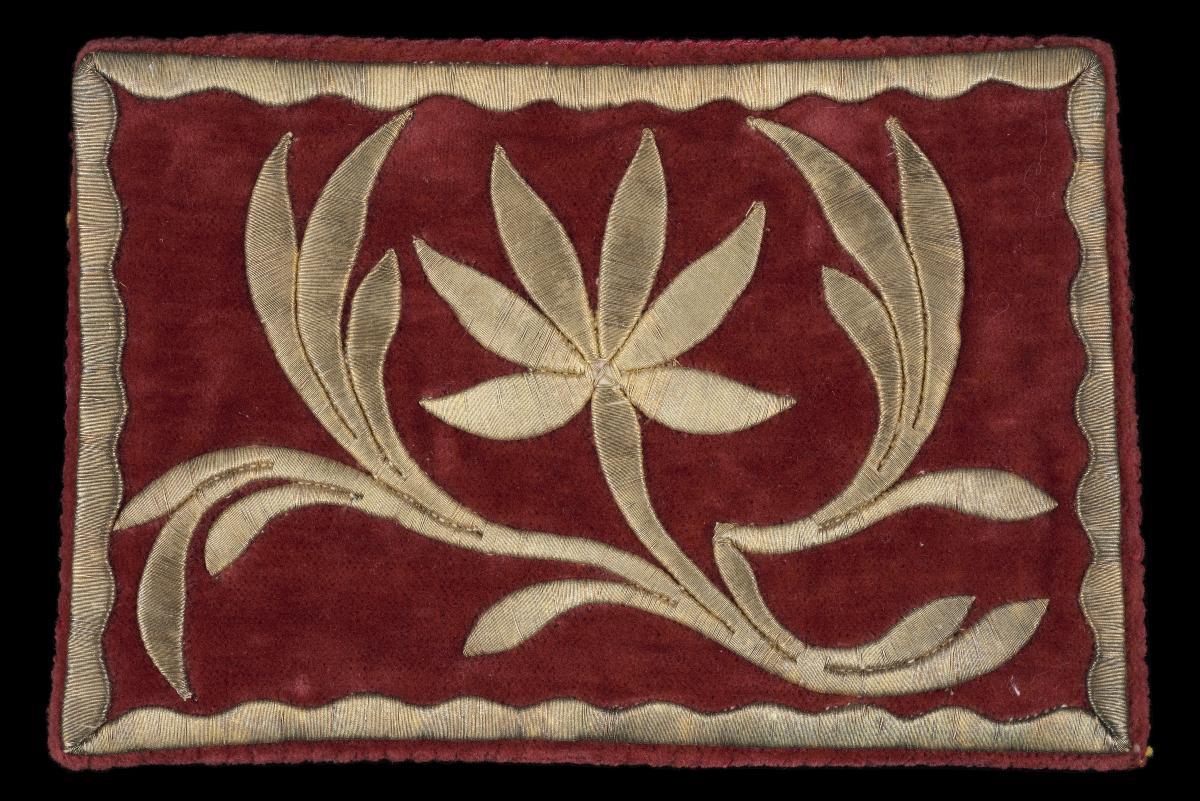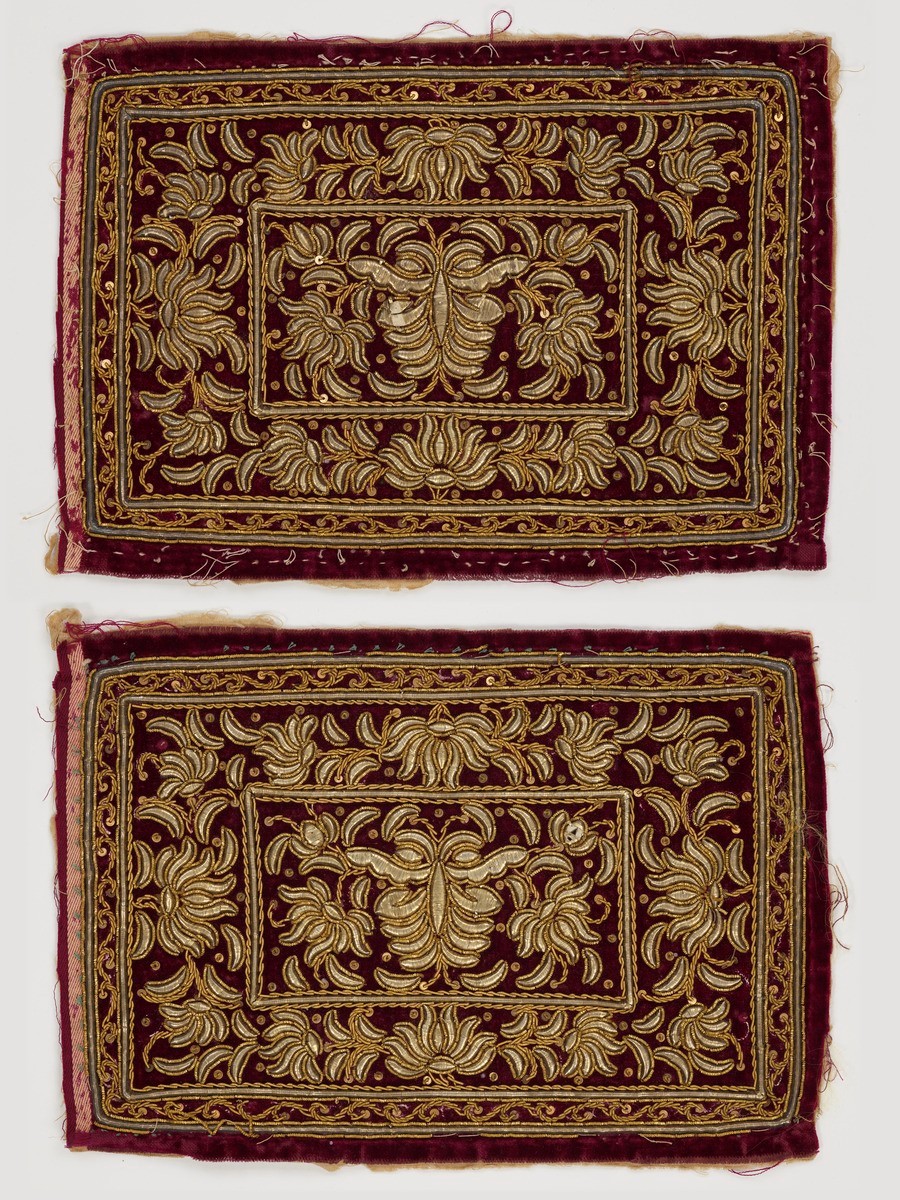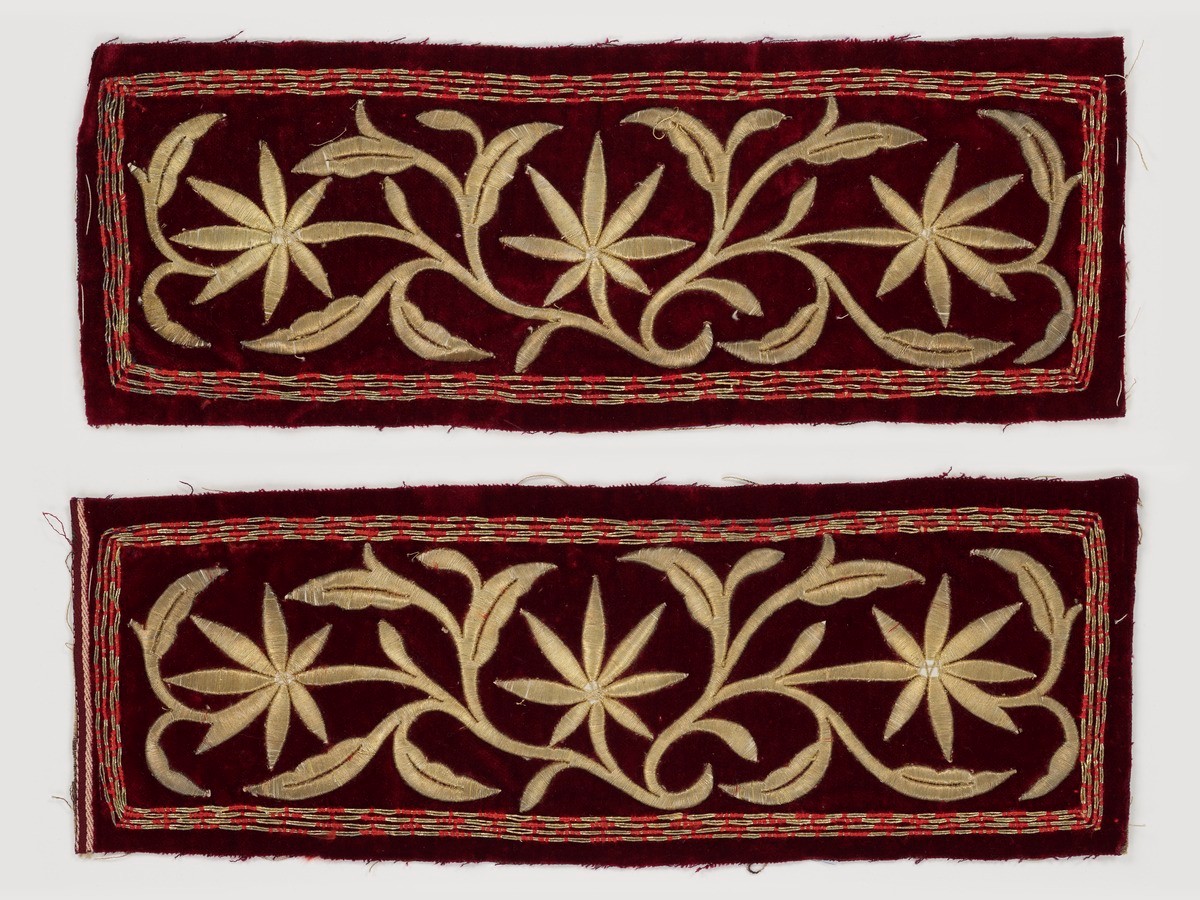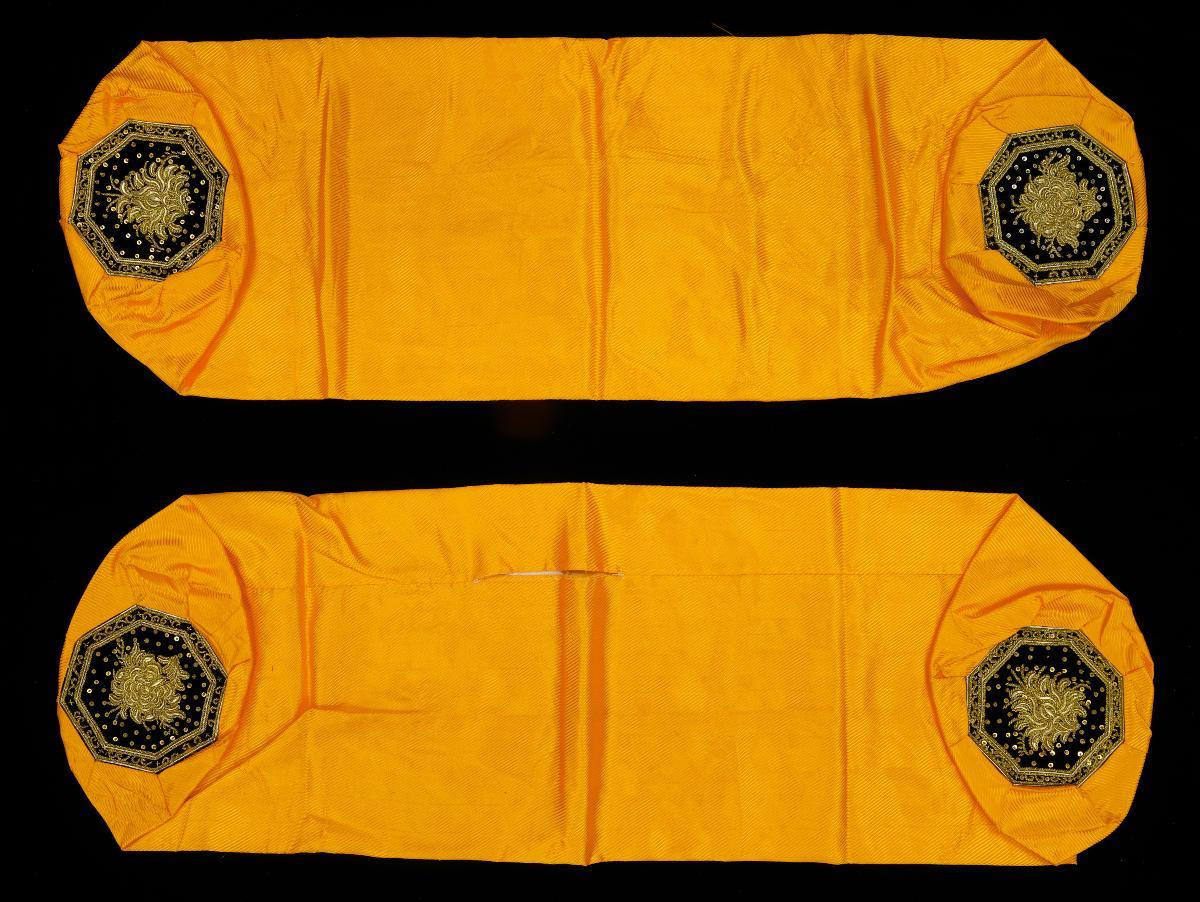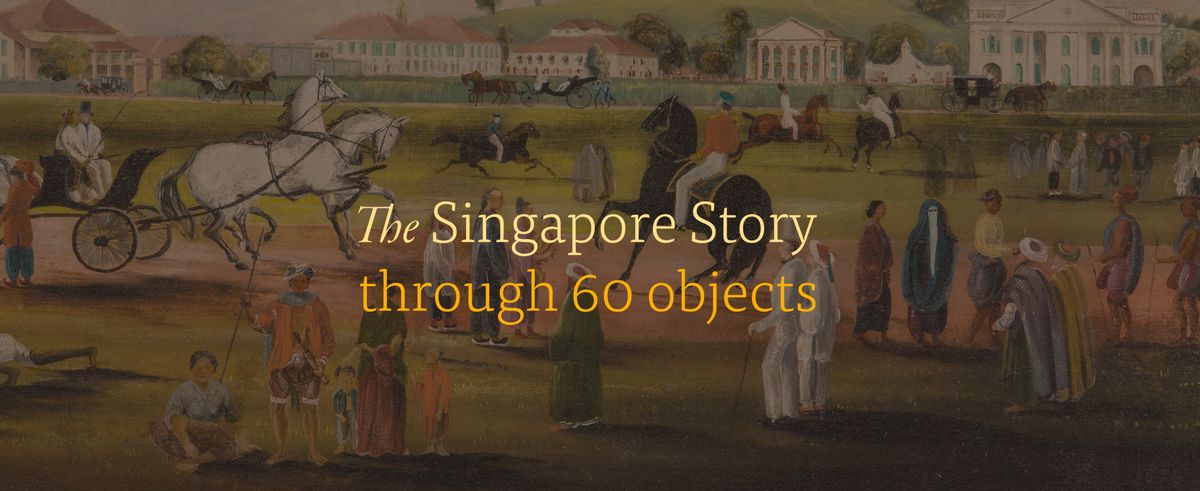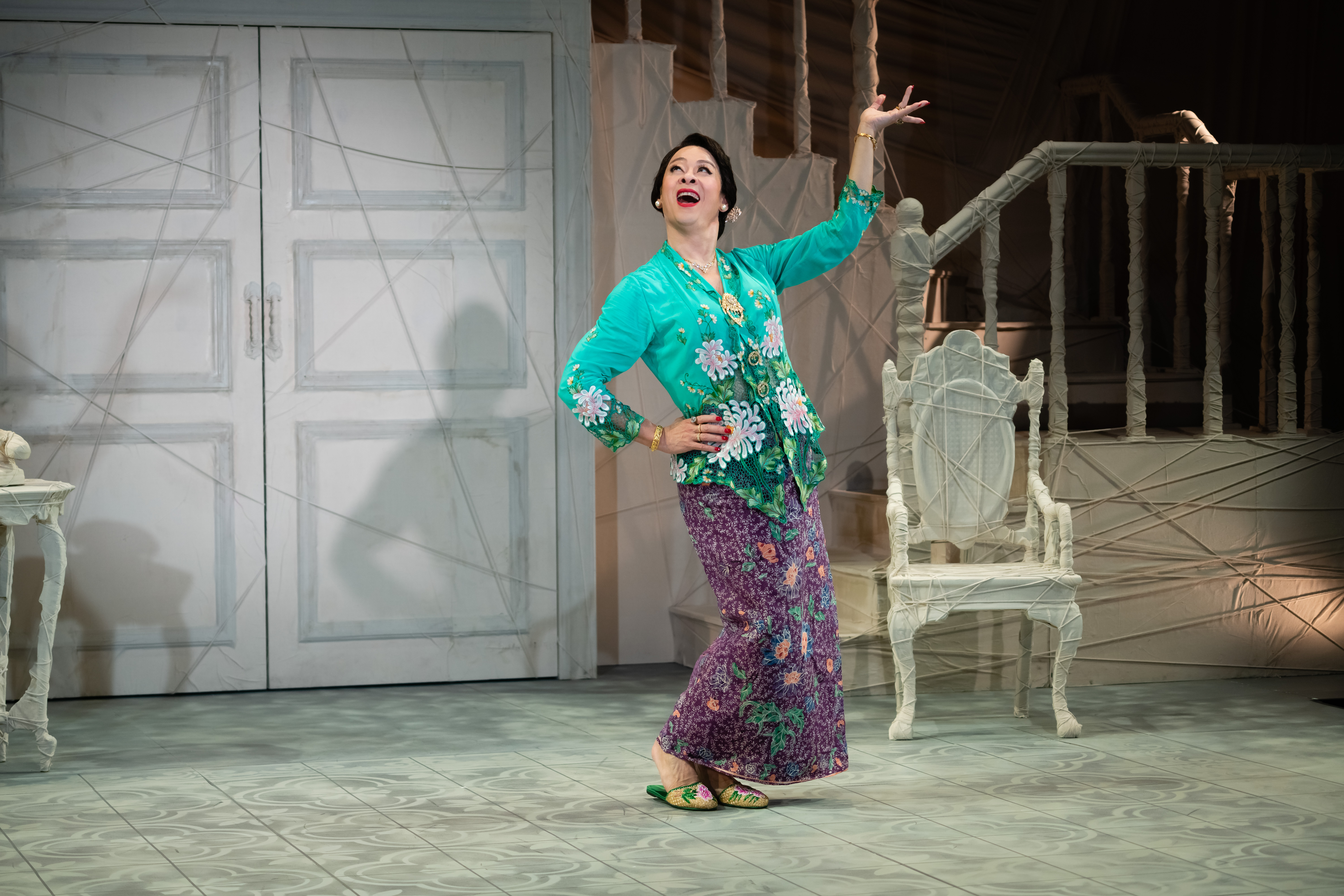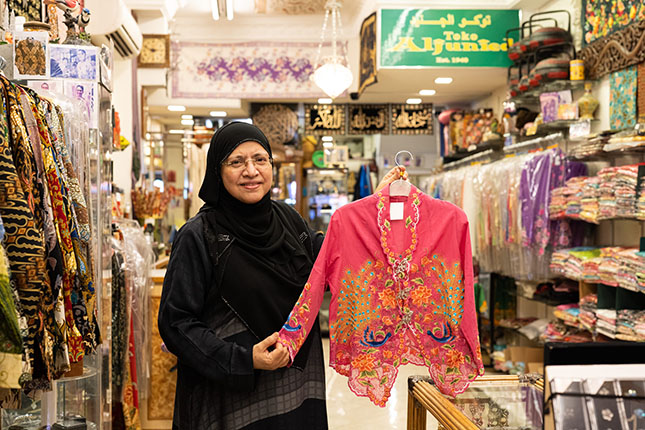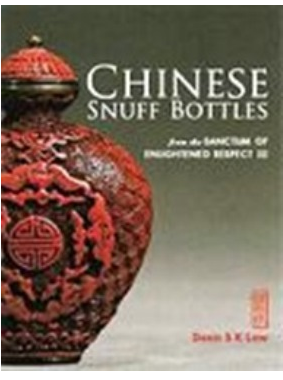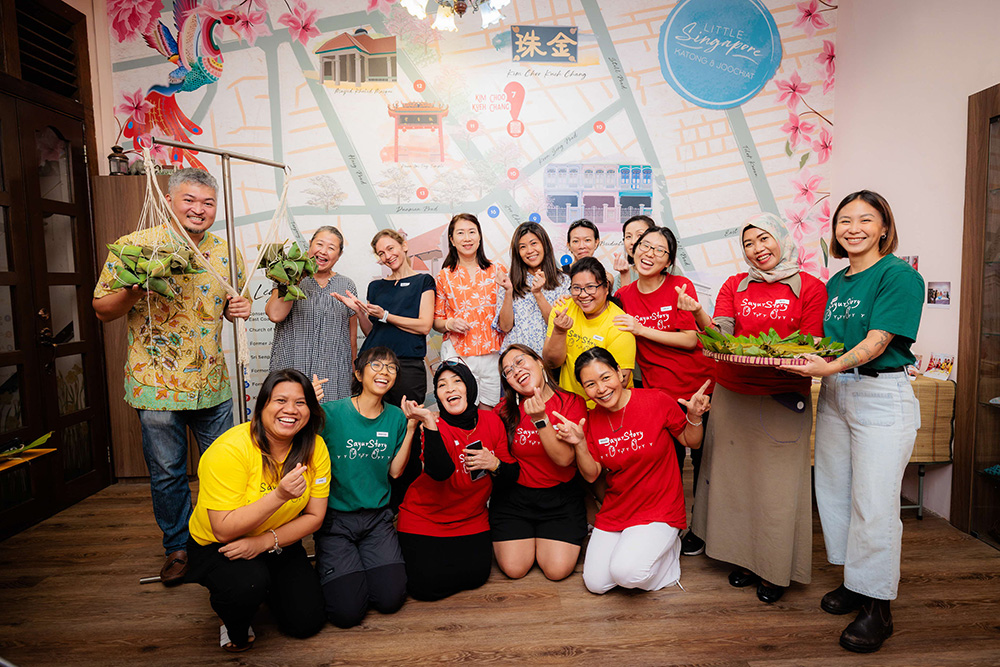Tekat is the Malay name given to the technique of decorating textile panels (usually velvet) with thickly applied gold thread decoration. When the thread is applied by couching, the technique is then known as tekat timbul or tekat suji. It is a traditional Malay handicraft that has been passed down through the generations and the craft predominantly by women in Malaysia. This particular method of production can be traced to Perak as they acquired a reputation as a producer of the distinctive tekat timbul, where embroideries of wrapped metallic threads are couched over a cardboard template to create a raised, relief effect. This Perak-style technique further distinguished by its continuous meandering foliage from which the stylized floral blossoms emerge (Cheah 2008). It projects the status symbol of the owners due to the expensive materials and high skill required to produce it. Commoners were prohibited from wearing them, unless specifically permitted or awarded by the Sultans (Ismail 1986). The pair here are rectangular and comprise couched gold thread on red velvet backgrounds. The decoration is stylised bunga anggerek (orchid) motif. The panels were intended to be added to the end of the end of a long, stiff, rectangular bolster that would have adorned a wedding bed.




